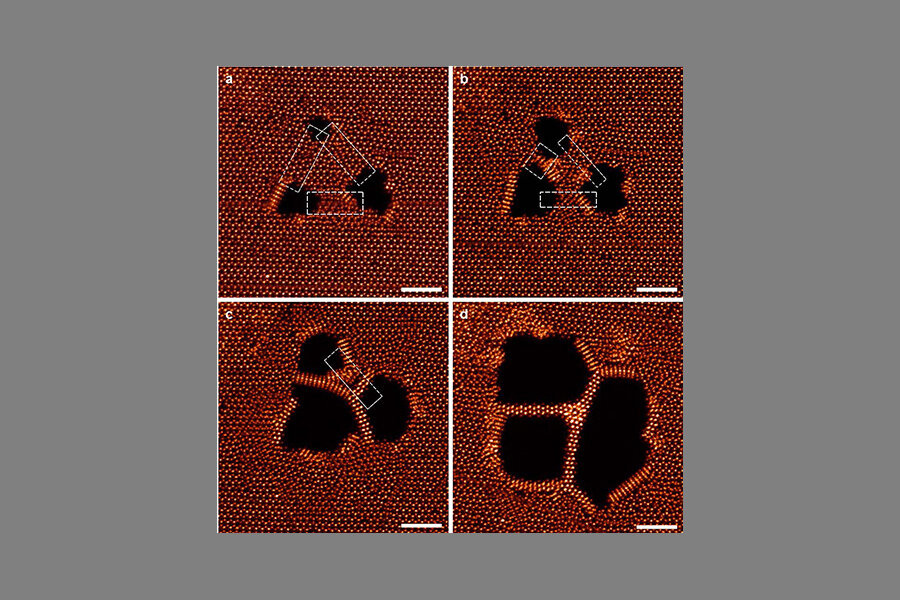Scientists create a wire just three atoms wide
Loading...
An ultrathin wire developed by researchers could someday make today's flatscreen televisions and tablets look ridiculously bulky by comparison.
By exposing special semiconducting materials known as transition-metal dichalcogenides (TMDCs) to a weak beam of electrons, lead researcher Junhao Lin, a Vanderbilt University Ph.D. student and visiting scientist at Oak Ridge National Laboratory and his team have developed flexible metallic wires that are just three atoms wide.
“Junhao used a scanning transmission electron microscope (STEM) that is capable of focusing a beam of electrons down to a width of half an angstrom (about half the size of an atom) and aims this beam with exquisite precision,” said Wu Zhou of Oak Ridge National Laboratory, who was involved with the study.
The "nanowires" – which measure one-thousandth the width of the tiny wires that are used to connect the transistors in integrated circuits – remained "conductive while undergoing severe mechanical deformations, thus showing promise for mechanically robust flexible electronics, " according to researches who published the findings of their study online on April 28 in a paper titled "Flexible metallic nanowires with self-adaptive contacts to semiconducting transition-metal dichalcogenide monolayers" in the journal Nature Nanotechnology.
In addition to the electrons, usage of TMDCs made by combining the metals molybdenum or tungsten with either sulfur or selenium, also played a crucial role in this experiment. TMDCs are naturally capable of forming monolayers. In fact, atomic monolayers are much sought after by researchers working in this field because of their certain characteristics, such as, high electron mobility and their remarkable strength and flexibility.
“This will likely stimulate a huge research interest in monolayer circuit design,” Lin said. “Because this technique uses electron irradiation, it can in principle be applicable to any kind of electron-based instrument, such as electron-beam lithography.”
But what purpose will this nanowires serve in future? "If you let your imagination go, you can envision tablets and television displays that are as thin as a sheet of paper that you can roll up and stuff in your pocket or purse," says Vanderbilt University physicist Sokrates Pantelides.






